Christmas in Paris
 12.17.2014
12.17.2014
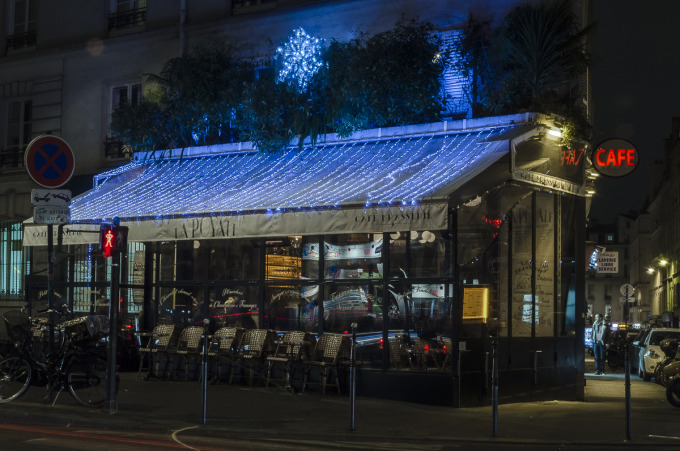
Why does Christmas feel so vastly different in Paris than in the U. S.?
It’s a week before Christmas and I feel—Paris feels—calm and peaceful. (Some of that sense of peace comes from the relief of distress I've been feeling about the U.S. Finally people are beginning to revolt against racist police brutality in America.)
But back to Christmas: years ago my mother initiated a Christmas ritual for our Arizona family. Enough with the glut of Christmas shopping! We would each choose one gift for $25 or under, preferably something amusing and original, wrap it and stack it beneath the Christmas tree.
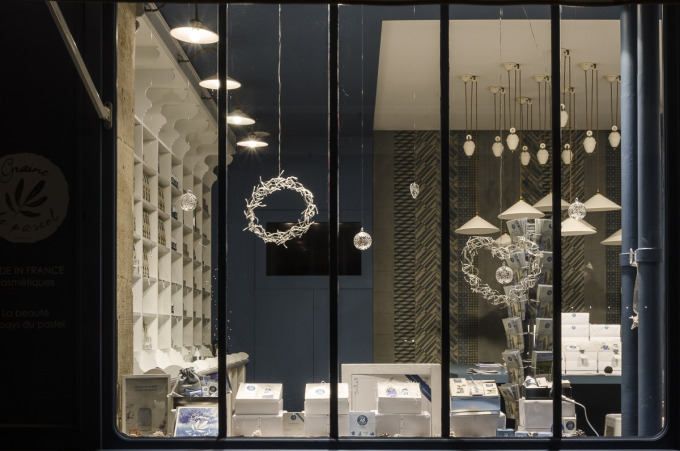
On Christmas Eve we’d gather and pick numbers from a hat to determine order of choosing, then select a gift to open. When your turn came, you could snatch someone else’s opened gift, or take a chance on an unopened one. Easy and fun. Everyone liked this low-pressure, low-cost version of Christmas (except for the vicious fights when everyone wanted the same gift. Kidding. Kind of.).
Sometimes a gift was so original it knocked your Christmas stockings off. My sister-in-law, Leatrice, once gave M & Ms, on which were printed portraits of my mother smoking a cigar. Wish I’d been there for that Christmas—I’d have tackled anyone to get that gift, and never, ever, eat them.
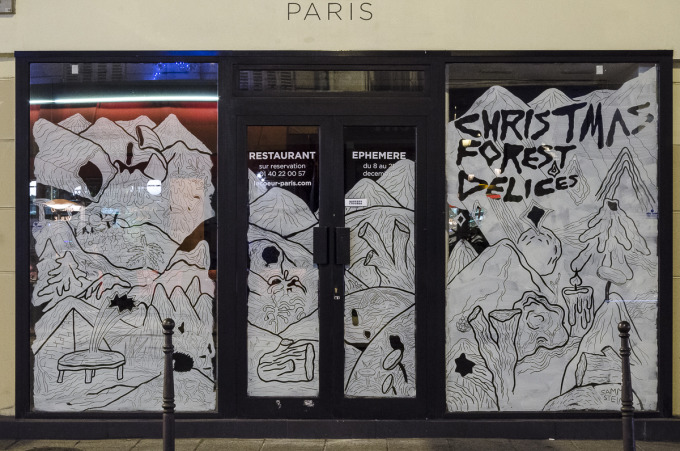
Still, the holiday season in America continued to be fraught with glut—too much advertising, too much treacly music, too much junky Christmas decoration, too many dumb holiday films, too much traffic, too many crowds, too much spending, no matter what you and your family chose to do. Too much everything!

In Paris, it’s the absence of all this that makes the season so pleasurable. The Christmas lights are minimalist. Less really is more. Certain colors are the same—red, silver, gold—but instead of the green of money, there’s more of the blue of the dreaming mind.
I find it amazing that one week before Christmas, I haven’t heard a single note of Muzak—no Rudolph, no Jingle Bells, no Silent Night—instead, the nights really are silent, except for the music of spoken French which surrounds me now as I write in my favorite café.
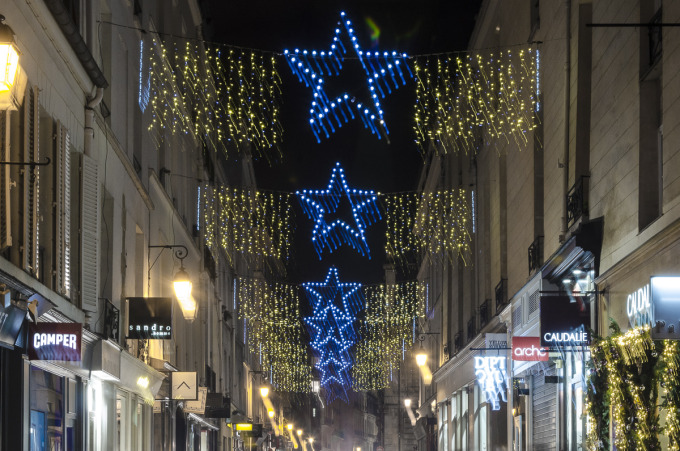
The window displays are, as usual, works of art, with some references to the season, but with fresh, original approaches.
There are more Christmas parties, but they tend to be attended by friends from all over the world rather than by family (or at least the ones we’ve been to). That’s okay, too. I carry my family inside my heart—they’re always with me. I sometimes think I love best from afar.
The essence of Christmas—the birth of Christ, and Santa Claus or Père Noël, who embodies the spirit of giving—are the same in both the U.S. and France.
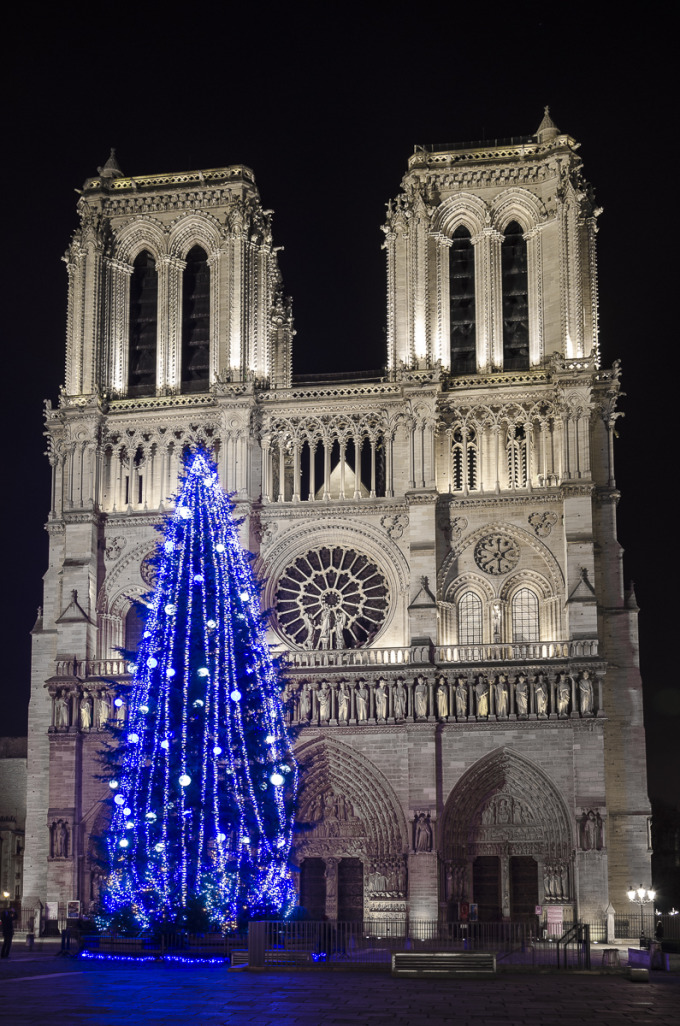
You don’t have to be a Christian to acknowledge what Christ represents: the divine embodied in man. I think each of us has an inner image of what divinity is, according to our genius (genius in Plato’s sense of a daimon, a guardian angel or twin soul who follows us all our lives and lets us know when we’re off track by giving us depression or other useful signals). For me, that inner image is not goodness. I was raised by good people, so-called atheists with many generations of Christian ancestors.
For me, that inner image is making art. I was also raised to exult in the treasures of art throughout the ages. For me, the divine center, the Self, is best expressed in art. My own way of honoring the inner Christ, or as C. G. Jung called it, the Self, is devotion to writing five or six days a week, a daily ritual to honor my daimon.
Elaine Pagels, in her bestselling Beyond Belief: The Secret Gospel of Thomas (2003), contrasts the Gospel of Thomas with the Gospel of John and argues that a close reading of The Gospel of Thomas shows that its teaching was: "If you bring forth what is within you, what you bring forth will save you. If you do not bring forth what is within you, what you do not bring forth will destroy you."
Another translation is: "There is a light within each person, and it lights up the whole universe. If it does not shine, there is darkness." Thomas emphasized the light within all human beings; John placed the emphasis on Divine Jesus Christ as the center of belief. Pagels is the main modern advocate for a connection between Buddhism and the third and fourth Century Christian sects, which were called "Gnostics" by early Christian heresiologists.
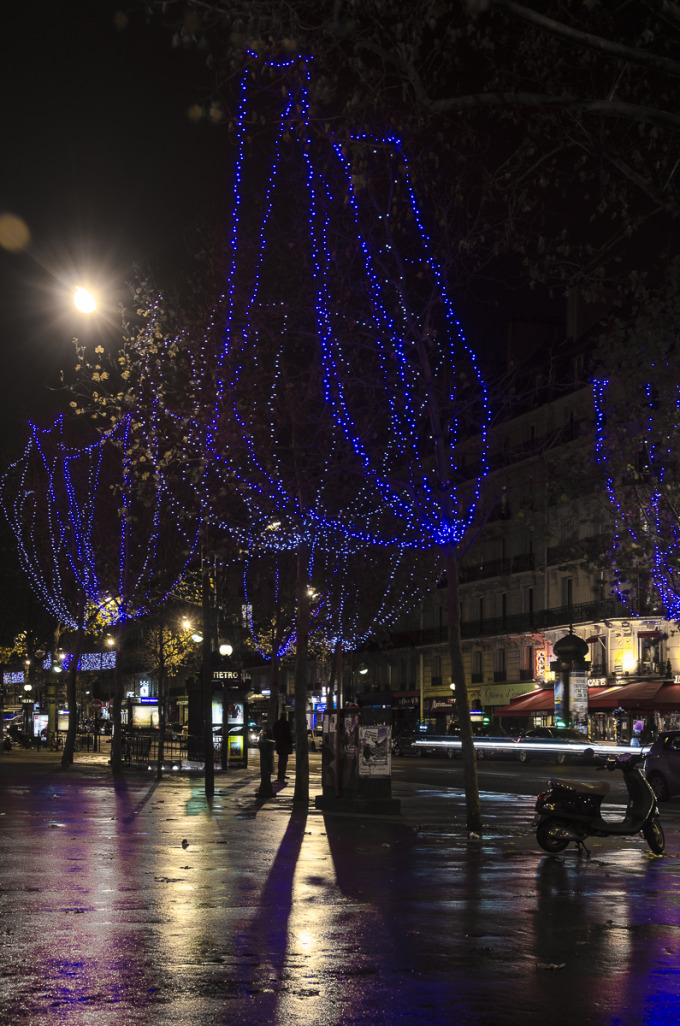
We’re celebrating the same thing this month in both countries. But in a commercial culture like the U.S., profit dominates. In France, quality of life wins out over profit. And everyone profits by that. (Unless you arrive at a store in Paris fifteen minutes before closing, and the proprietor languidly informs you that they’re closed, they need time to tidy up, and get home, go on this week’s vacation or weekend in the country. And then you shake your head, and say to yourself, Jesus Christ! This would never happen in the U.S!)
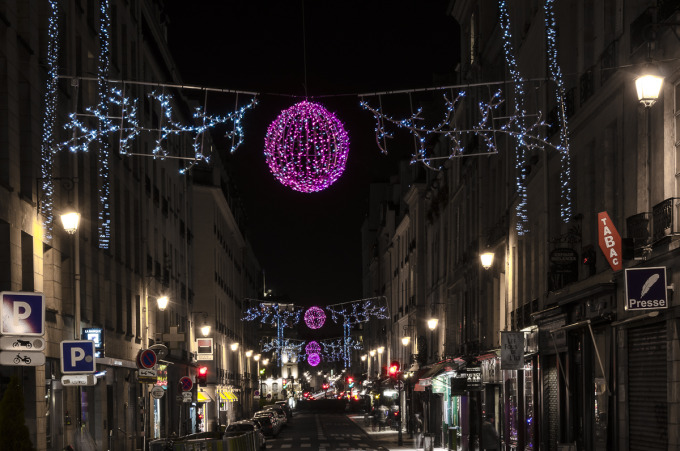
 Buddhism,
Buddhism,  Christianity,
Christianity,  Christmas,
Christmas,  Elaine Pagels,
Elaine Pagels,  Paris,
Paris,  commercialism,
commercialism,  daimon,
daimon,  family,
family,  gospels in
gospels in  Paris Life
Paris Life 
